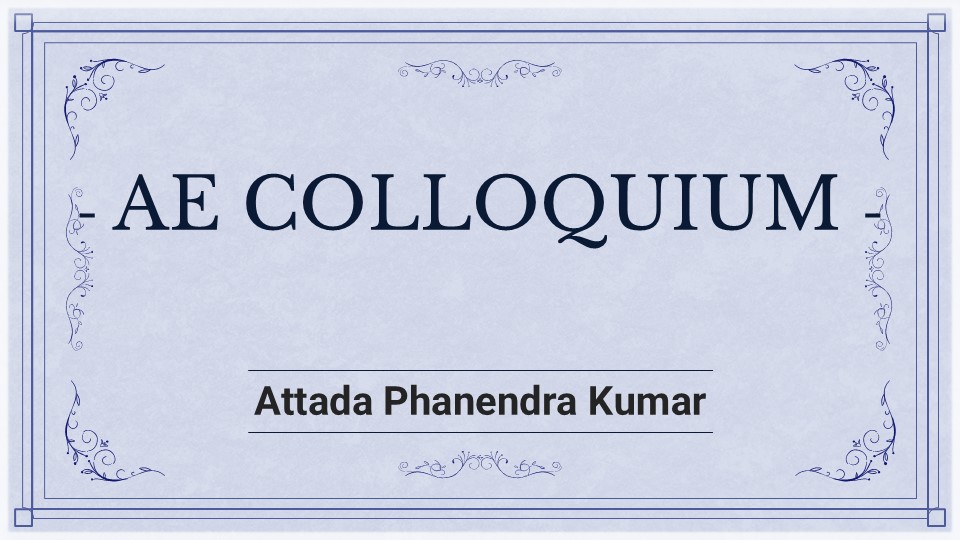
- This event has passed.
Ph.D. (Engg): Multiscale modelling and design of multifunctional composites for microwave absorption applications
December 6, 2024 @ 2:00 PM - 5:00 PM

Microwave absorption materials (MAMs) are crucial for both long-standing aeronautical and emerging space security applications, with carbon-based materials traditionally dominating the field due to their exceptional strength and lightweight nature. In recent years, other ceramic-based materials have emerged as promising alternatives, due to their superior resistance to thermal detection, due in turn to their low thermal conductivity and inertness to oxidation at high temperatures. However, such ceramics by themselves often lack the mechanical flexibility and lightweight characteristics essential for aircraft. Combining such ceramics with carbon-based materials renders the achievement of an optimal balance of electromagnetic and mechanical (specific strength, stiffness, stability) performances, possible. Traditional experimental approaches to designing MAMs are resource-intensive, given the multidimensional parametric space that must be explored. This research adopts a multiscale computational framework, leveraging minimal self-generated experimental data to efficiently design ceramic-carbon hybrid materials for broadband microwave absorption, ensuring durability and low observability in extreme environments.
The initial phase investigates the microwave absorption capabilities of ceramic-based auxetic metamaterials with four distinct topologies: star, re-entrant, anti-tetrachiral, and cross-chiral. These structures were chosen to analyse their reflection loss (RL) performance under transverse electric (TE) and transverse magnetic (TM) polarised electromagnetic (EM) waves. An in-house computationally-efficient homogenisation tool, based on the Variational Asymptotic Method (VAM), was employed to derive the effective EM properties. These properties were then used to compute RL spectra by evaluating the scattering matrices. Interestingly, the star and cross-chiral auxetic structures demonstrated identical absorption capabilities despite their architectural differences, achieving a maximum absorption of 99.99% (RL of -40 dB) with a thickness of 3.5 mm under TM-polarised EM waves. These absorbers maintained RL < -10 dB for incidence angles up to 700. However, TE-polarised EM waves led to more reflection (RL > -6 dB), highlighting a significant performance gap.
Later, to overcome the limitations observed with auxetic metamaterials, a novel sandwich composite structure was proposed to achieve broadband RL under both TE and TM polarisations. This sandwich panel integrates ceramic-coated graphite fibre-reinforced polymer (C-GFRP) composite as the face sheet with a ceramic-based star auxetic metamaterial as the core. Representative volume elements (RVEs) of C-GFRP composites are generated using the in-house tool, and the effective properties of the unidirectional C-GFRP face sheets were computed using the in-house homogenisation tool and validated with experimental results from the literature. A detailed parametric study of 300 analyses was conducted using the in-house transfer matrix method (TMM) tool to identify the optimal designs. Two configurations thus identified from the analysis are (a) Vf = 15% (uncoated) and (b) Vf = 20% with a ceramic coating volume fraction (Cf) of 70%. Configuration (a) achieved RL < -10 dB up to an incidence angle of 400, while configuration (b) extended this performance up to 600. Both configurations attained broadband RL performance, covering the entire X-band frequency range.
The final phase of the study experimentally validates the multiscale computational framework. For this purpose, multiphase nanocomposites comprising carbon-based nanoparticles (MWCNTs) and other ceramic inclusions (BaTiO₃, CoFe₂O₄) are fabricated and tested for broadband RL capabilities. Comprehensive characterisation techniques such as SEM, TGA, and X-ray computed tomography were employed to confirm nanoparticle morphology, volume fractions, and distribution. Reflection and transmission measurements using a two-port vector network analyser (VNA) provided scattering parameters within the X-band. Effective EM properties were derived using the Nicolson-Ross-Weir (NRW) algorithm. At the same time, an in-house optimisation tool, based on Nelder-Mead and L-BFGS-B methods, was employed to extract the individual inclusion properties. Parametric studies revealed that composites with high BaTiO₃ or MWCNTs content exhibited surface impedance mismatches, leading to EM wave reflection rather than absorption. In contrast, CoFe₂O₄ dominant composites demonstrated superior broadband RL (< -10 dB) for different thickness samples, attributed to improved surface impedance matching. Additionally, the influence of incident angle and polarisation was assessed. TM-polarised EM waves provided broadband RL for incidence angles up to 800, while TE-polarised EM waves were effective only up to 400 due to distinct field interaction mechanisms. The study demonstrates a versatile framework for designing novel nanocomposites tailored to broadband or frequency-selective microwave absorption applications, addressing the limitations of traditional approaches.
Speaker: Attada Phanendra Kumar
Research Supervisor: Prof. Dineshkumar Harursampath